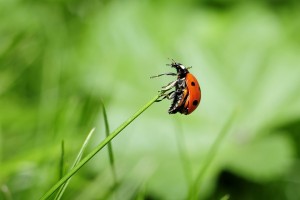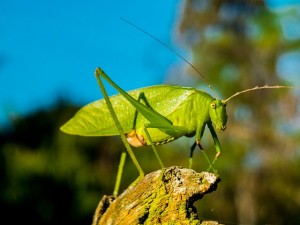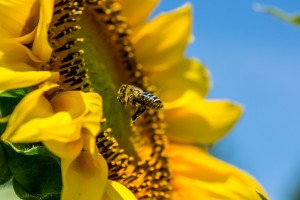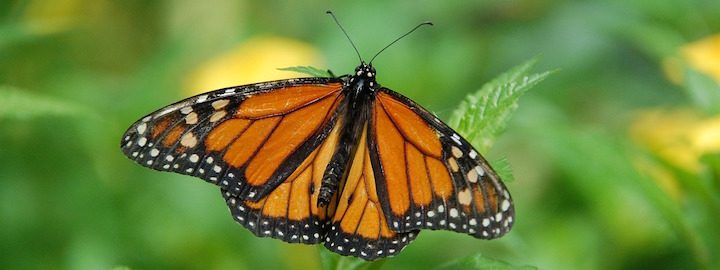By any standard, insects dominate the world. They live on land, in water and in the air. They have colonized every continent, including Antarctica. And they make up three-quarters of all known animals—currently there are 1 million known insect species and an estimated 4 to 5 million still undiscovered.
How did insects become the most successful group of animals on the planet? For the answer to that question, you first have to look at their history, which began around 480 million years ago, even before the first terrestrial ecosystems developed.
“There’s a long fuse,” Michael Engel, PhD, a professor of ecology and evolutionary biology told New Scientist. “Insects took this super powerful concoction of traits that built up over hundreds of millions of years, and conquered the world.”
Insects Join Plants on Land
 Recent research suggests that the earliest insects lived in the watery boundaries between land and sea. Around the time that the first plants evolved on land, insects were able to make the same leap. They were aided, in part, by their tough exoskeleton, which helped them deal with life on land—the threat of dehydration, gravity (without the support of water), and wild swings in temperature and sunlight during the day.
Recent research suggests that the earliest insects lived in the watery boundaries between land and sea. Around the time that the first plants evolved on land, insects were able to make the same leap. They were aided, in part, by their tough exoskeleton, which helped them deal with life on land—the threat of dehydration, gravity (without the support of water), and wild swings in temperature and sunlight during the day.
One of the next leaps for insects involved flight, which they evolved around 420 million years ago. Scientists think that the earliest flying insects used two flat lobes extending from their thorax to glide back to earth after climbing. From there, insects evolved larger wings. But it wasn’t until insects evolved wings that could be folded over their bodies when not in use that they really claimed the skies.
Metamorphosis Help Insects Survive Extinctions
 It was the next big transformation, though, that helped insects to survive two mass extinctions, one of which wiped out the dinosaurs. This change was complete metamorphosis, which appeared around 310 million years ago. Before this time, insects grew larger by progressively shedding their exoskeleton. In contrast, complete metamorphosis broke their life cycle into distinct stages.
It was the next big transformation, though, that helped insects to survive two mass extinctions, one of which wiped out the dinosaurs. This change was complete metamorphosis, which appeared around 310 million years ago. Before this time, insects grew larger by progressively shedding their exoskeleton. In contrast, complete metamorphosis broke their life cycle into distinct stages.
In the larval stage, insects are primarily focused on feeding, while the adult stage is dedicated to reproduction. In the middle pupa stage, insects evolved to store high amounts of glycerol. This allowed them to withstand the freezing and drying that occurs in harsh environments, such as those that occurred during mass extinctions.
Rise of the Pollinating Insects
 The latest major development among insects—between 65 and 145 million years ago—involved the development of butterflies, moths, bees, flies and ants. These insects were ideally suited to take advantage of the flowering plants that were first appearing on land. Many of these species remain essential for human survival, pollinating four-fifths of the world’s food crops.
The latest major development among insects—between 65 and 145 million years ago—involved the development of butterflies, moths, bees, flies and ants. These insects were ideally suited to take advantage of the flowering plants that were first appearing on land. Many of these species remain essential for human survival, pollinating four-fifths of the world’s food crops.
With the onset of global climate change, insects once again face environmental challenges, as do many other animals on the planet. But given their resiliency and the many traits that have enabled them to survive previous catastrophes, insects may continue to dominate the world even as the temperatures rise.


